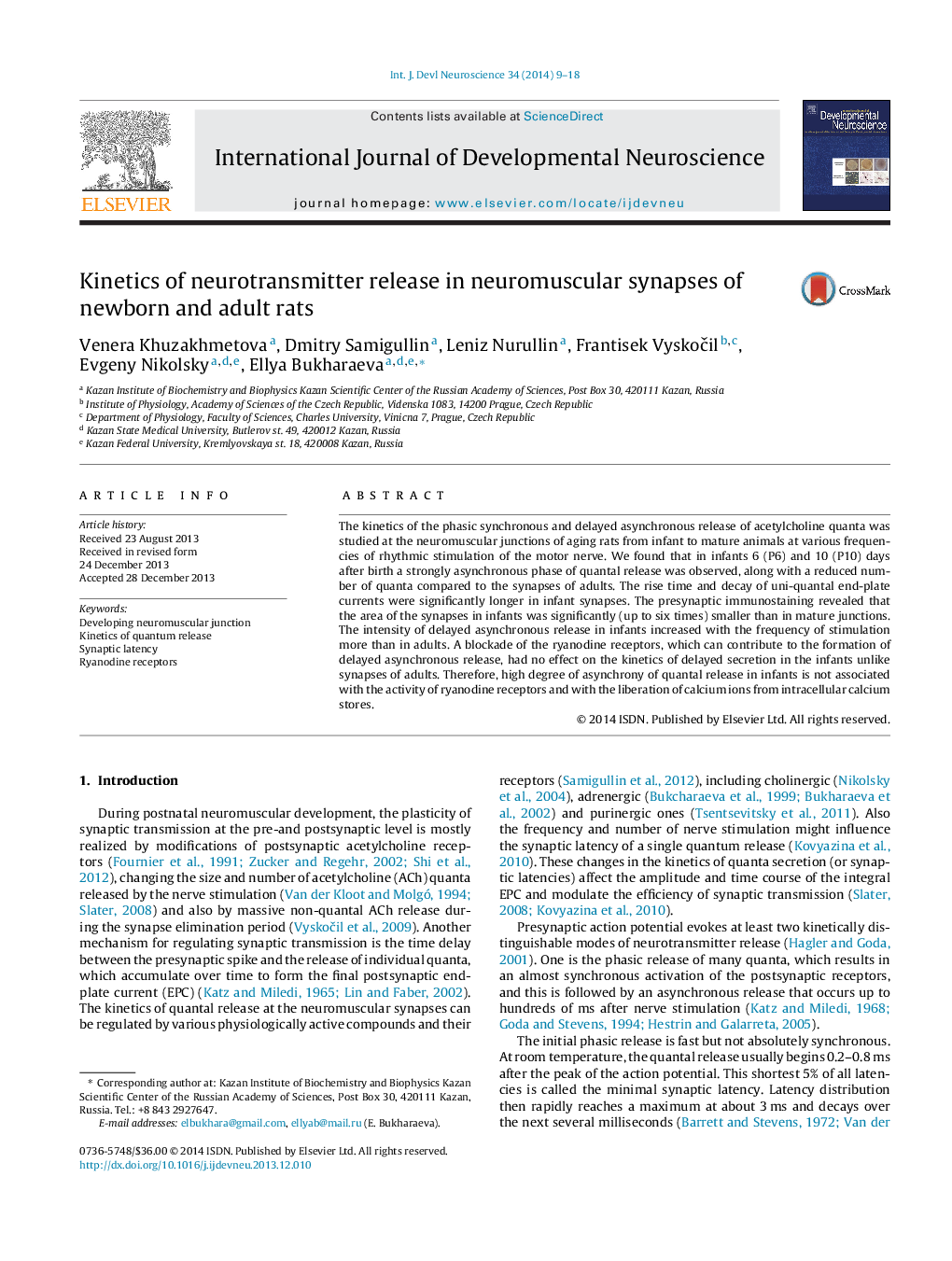| Article ID | Journal | Published Year | Pages | File Type |
|---|---|---|---|---|
| 2785937 | International Journal of Developmental Neuroscience | 2014 | 10 Pages |
•Low probability of secretion is accompanied by long synaptic delays at infant rats.•Quantal release is significantly asynchronous at the synapses of infant rats.•Ryanodine receptor blockade does not eliminate the asynchronous release in newborn.
The kinetics of the phasic synchronous and delayed asynchronous release of acetylcholine quanta was studied at the neuromuscular junctions of aging rats from infant to mature animals at various frequencies of rhythmic stimulation of the motor nerve. We found that in infants 6 (P6) and 10 (P10) days after birth a strongly asynchronous phase of quantal release was observed, along with a reduced number of quanta compared to the synapses of adults. The rise time and decay of uni-quantal end-plate currents were significantly longer in infant synapses. The presynaptic immunostaining revealed that the area of the synapses in infants was significantly (up to six times) smaller than in mature junctions. The intensity of delayed asynchronous release in infants increased with the frequency of stimulation more than in adults. A blockade of the ryanodine receptors, which can contribute to the formation of delayed asynchronous release, had no effect on the kinetics of delayed secretion in the infants unlike synapses of adults. Therefore, high degree of asynchrony of quantal release in infants is not associated with the activity of ryanodine receptors and with the liberation of calcium ions from intracellular calcium stores.
